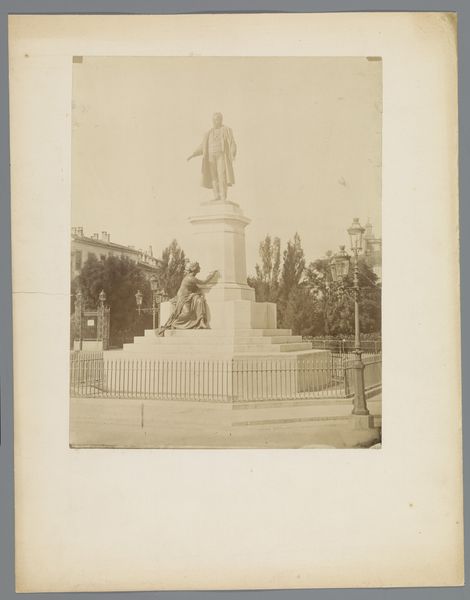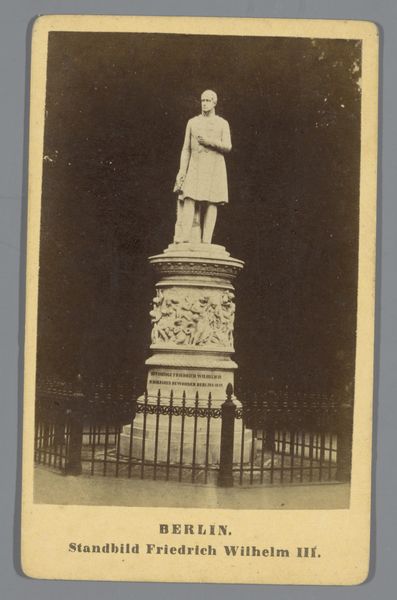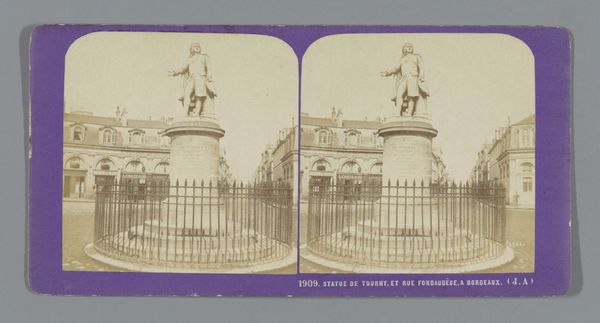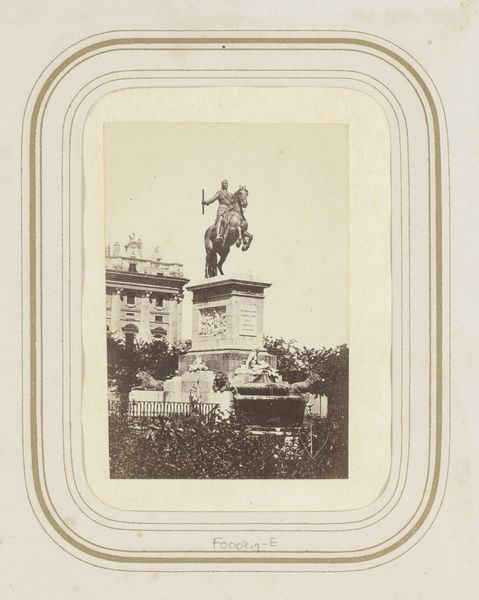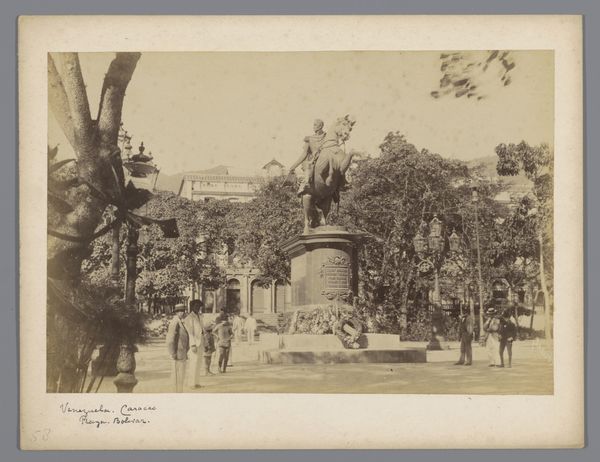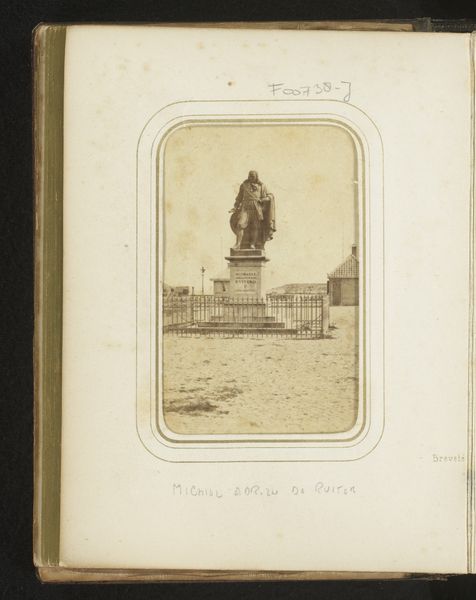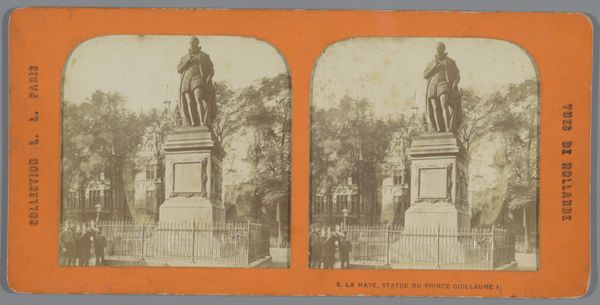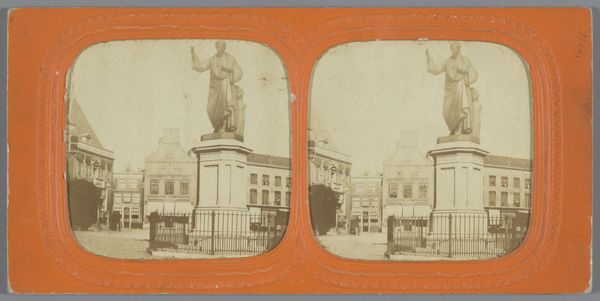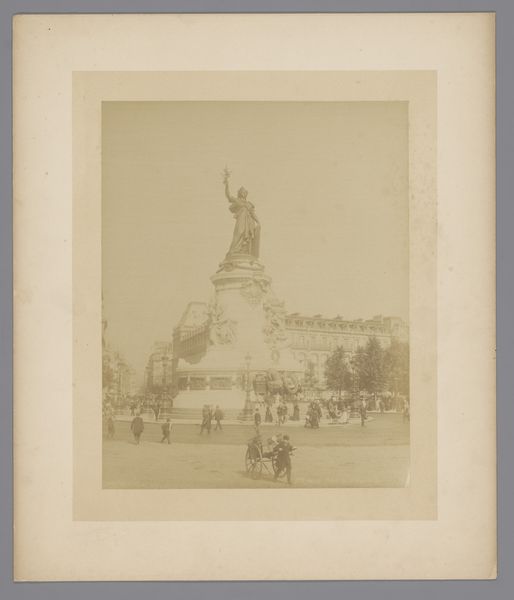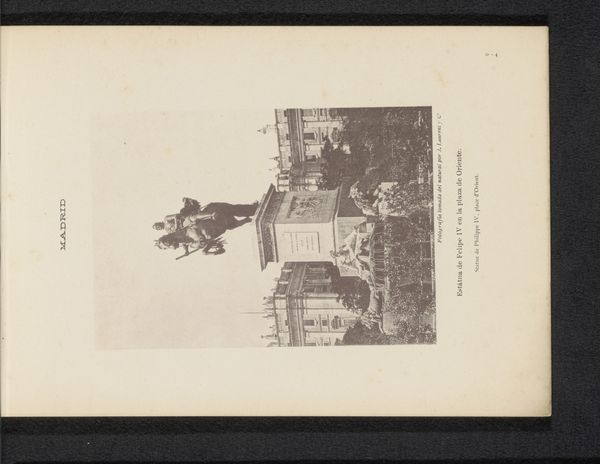
public-art, photography, gelatin-silver-print
#
portrait
#
landscape
#
public-art
#
photography
#
gelatin-silver-print
Dimensions: height 94 mm, width 57 mm
Copyright: Rijks Museum: Open Domain
Curator: Today we’re looking at a gelatin-silver print, “Standbeeld van François Arago te Perpignan,” placing it somewhere between 1880 and 1910. The work, part of the Rijksmuseum collection, captures a public art piece—a statue of François Arago. Editor: The first thing that strikes me is the confident pose, that outstretched hand seems to be not just directing but perhaps even proclaiming something important to the world. It imbues the entire scene with purpose and forward motion. Curator: It’s intriguing to consider how this image operates within the context of 19th-century public art. Public sculptures served distinct political purposes, promoting specific historical narratives to bolster national identity and solidify shared beliefs. Here, we witness the fusion of art, politics, and civic engagement shaping a space. Editor: Absolutely. And Arago himself—that’s what I find fascinating. That extended hand makes me wonder what principles he stood for and how those are distilled into this bronze figure for public consumption and cultural memory. The very presence of his sphere points towards his field. What kind of values and imagery are wrapped up in it for people looking at this statue? Curator: Gelatin-silver prints like this democratized image production and dissemination, it was widely accessible because of these methods, and served to memorialize and publicize art in an increasingly modern world. The photo as evidence, to broadcast culture through accessible formats. Editor: And how interesting to think about the transition of material—from a potential, heavy bronze statue erected as a point of reverence and a symbol in the city space and subsequently recreated in a fragile photographic medium. Its function changes, from a symbol of authority and now as one of contemplation. Curator: Precisely. By analyzing both the materials of the statue itself and of the medium employed in reproducing it, we gain deeper insights into its historical and cultural relevance. Editor: It makes you ponder about his lasting legacy, now not only literally set in stone, but as a photograph caught within our memory and understanding of 19th-century art and symbolism. Curator: An enduring intersection of form, medium, and the complex socio-political landscape. Editor: Exactly; a dialogue that stretches through time.
Comments
No comments
Be the first to comment and join the conversation on the ultimate creative platform.
